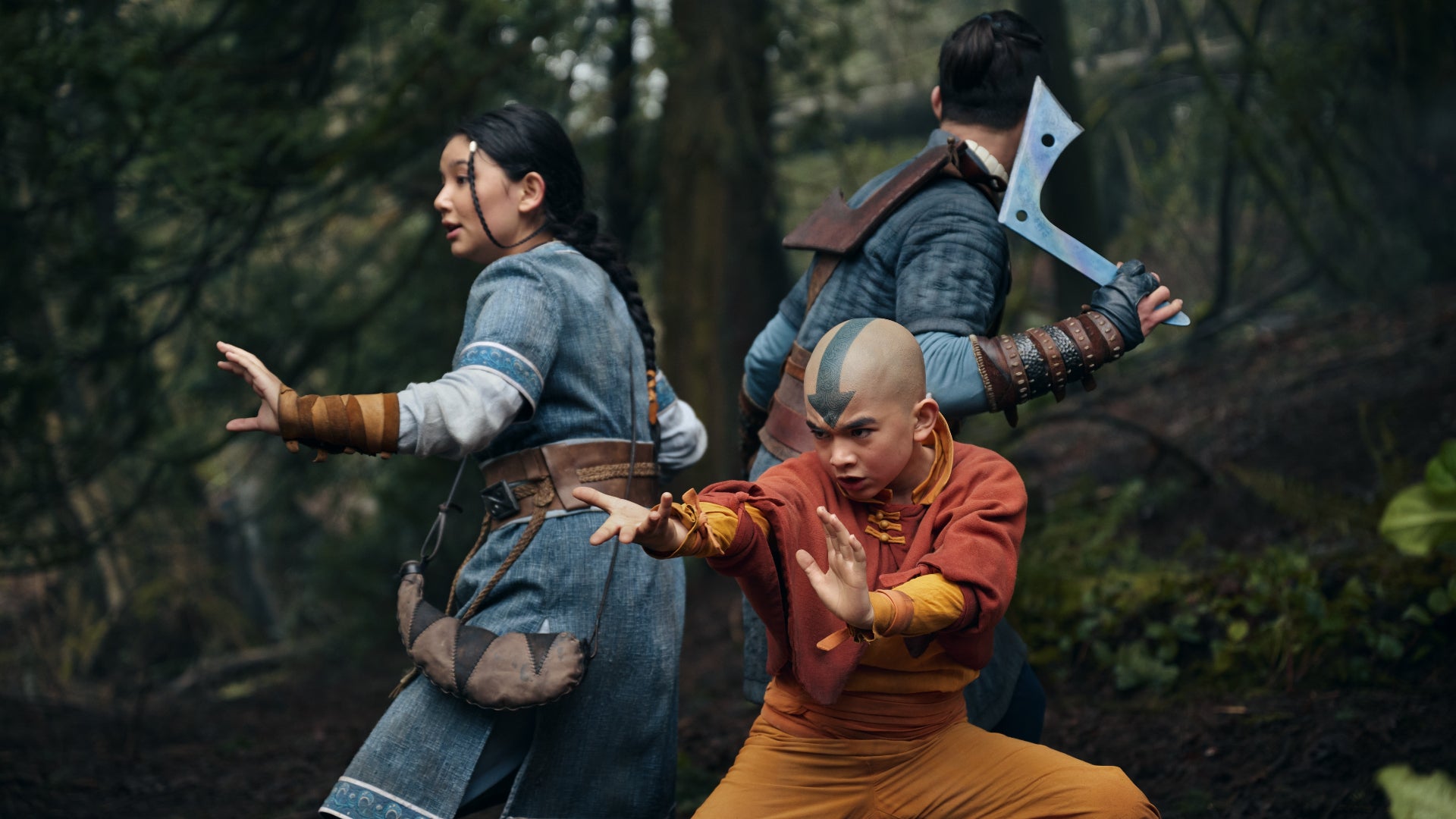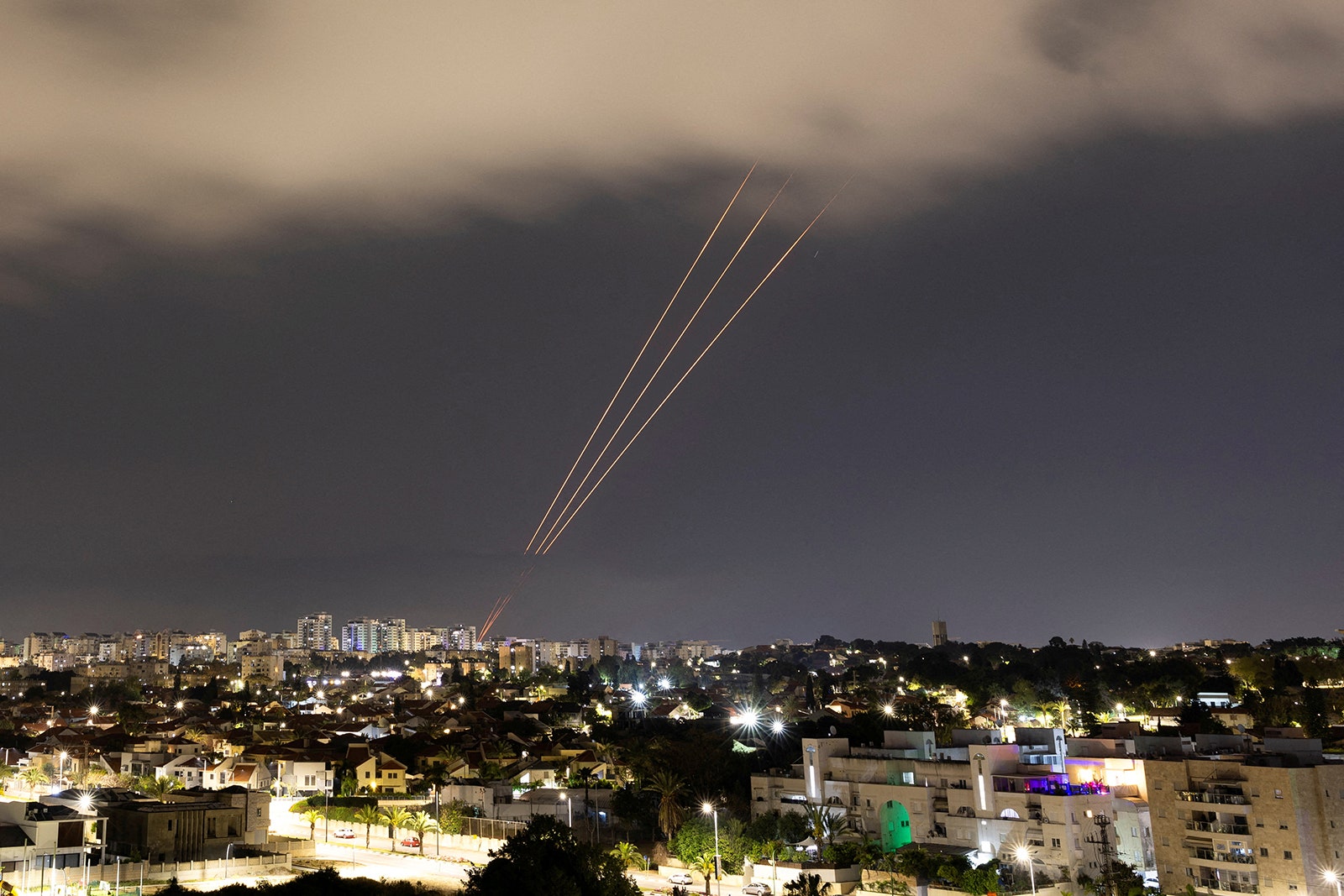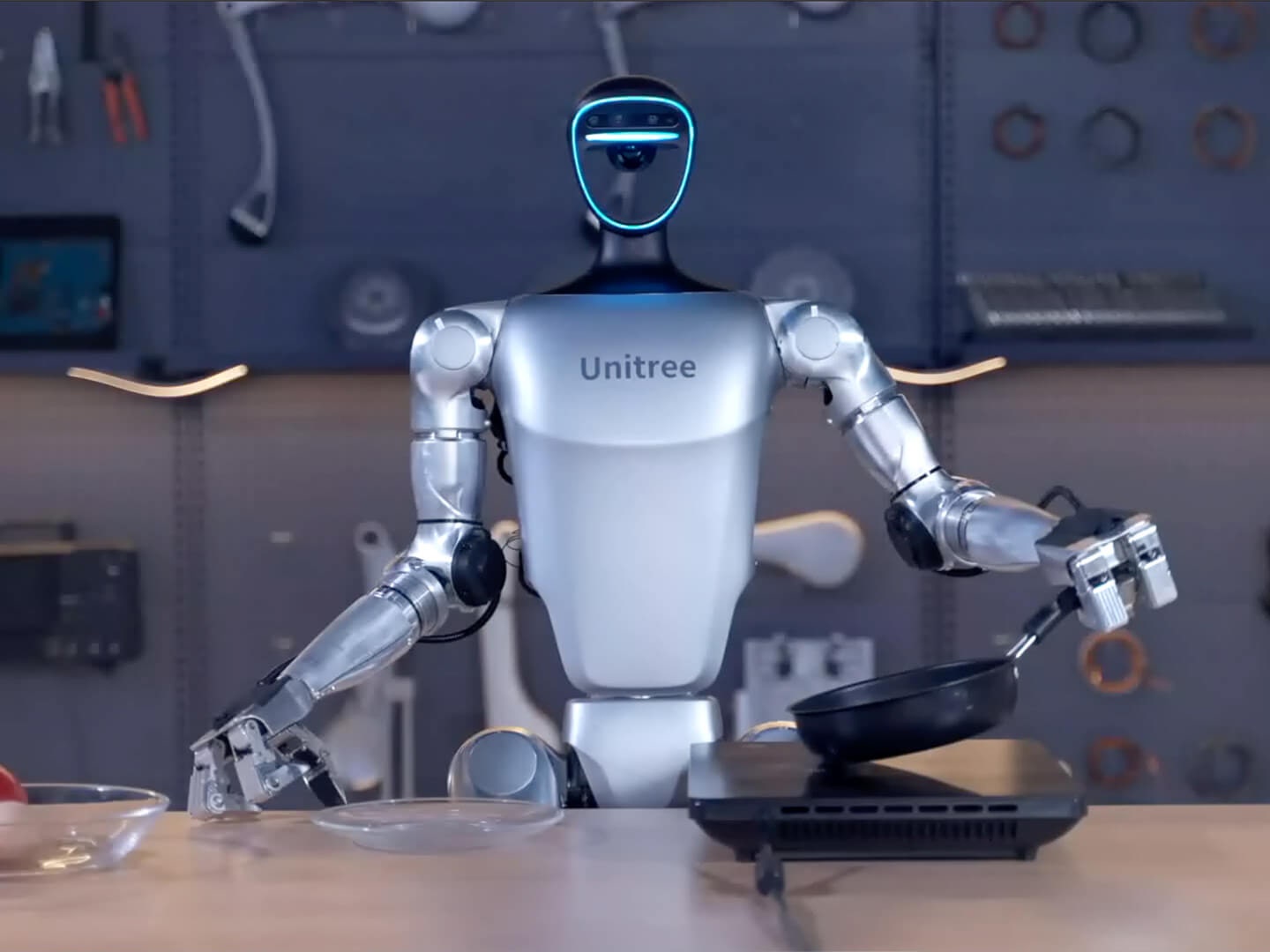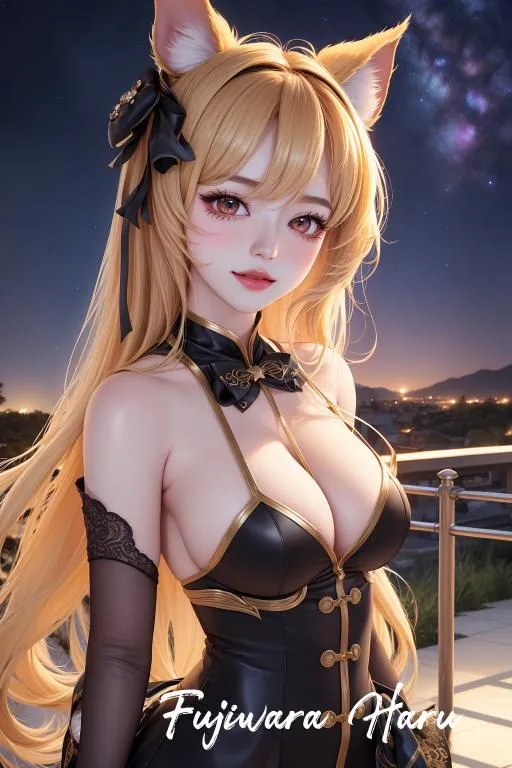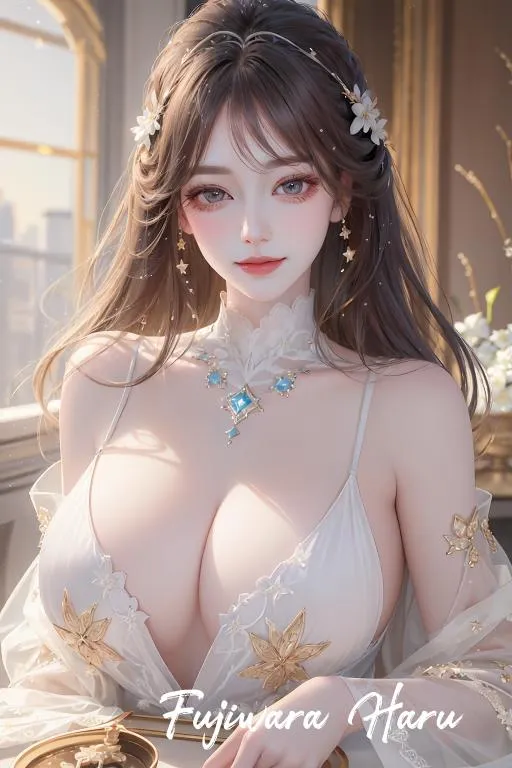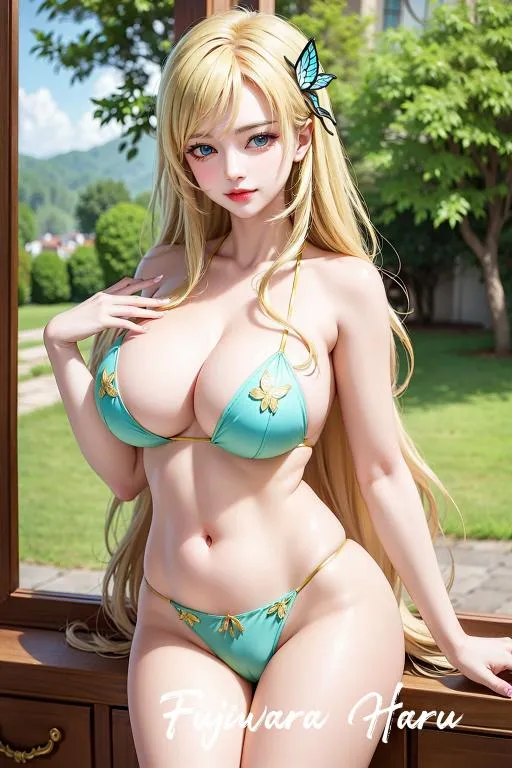There are few modern properties that feel more sacred than Avatar: The Last Airbender.
So, when Netflix announced all the way back in 2018 that it was working on a live-action adaptation of the beloved Nickelodeon series, the anticipation - and anxiety - from fans was immense. How do you improve upon what many feel is perfection? And why do it anyway?
The approach, according to showrunner Albert Kim and executive producer/director/VFX supervisor Jabbar Raisani? You change it up. In the below interview, Kim and Raisani explain how they've kept a lot of the foundation of the original, but are still putting their own spin on it.
I sat down with Kim and Raisani as part of IGN's 2024 Fan Fest coverage (see a preview of our lineup here), and got to ask them about everything from those changes they're making, the VFX, the cast, moving forward without original series creators Michael Dante DiMartino and Bryan Konietzko, and a whole lot more.
Taking on the Pressure
IGN: I feel like everyone has their, "I was watching it while it was on," or, "I discovered it years ago and was like, 'What the heck is this?' " with Avatar: The Last Airbender. When did you guys get into Avatar?
Jabbar Raisani, executive producer, director, and VFX supervisor: I saw it when it first came out. I was a big fan of it, and then I got wind that Netflix was going to be making it, and I was like, "How do I get on that show?" And I started talking with Teddy (Netflix CEO Ted Sarandos) about it, and then I think Teddy mentioned me to you, and then that's how I ended up on it.
Albert Kim, showrunner and executive producer: It was my daughter's favorite show growing up. So I used to come home and find her sitting by herself watching it every day. And I sat down with her because I thought it was a little bit above her head. But pretty soon, I stopped explaining things; I was just watching it on my own because it was so good. So that's how I got hooked into the original series.
Not only was it an incredible story and epic and all of that, but obviously, it was a show that was centered around Asian legend and folklore, which was incredibly rare, not just then, but now. And so, having my daughter watch that was really important for us.
I’m sure you get a ton of cool points, as a dad, for doing this now, then.
AK: Well, it was funny. When I brought up the subject of doing the live-action version of it, my daughter was very excited. My son, who was also a huge fan, was like, "I don't know if you should do that," because he is in the contingent of fans that think you cannot improve upon the original. So he was a little wary. And he was also probably a little worried for me because he also knows how ruthless the fans and the online community can be if you get something wrong, so he was a little bit protective of me on that side, but I think we won him over.
Well, I think your son touches on a very common sentiment. A big question surrounding the show is, how much are you guys changing, and how much is staying the same? How much freedom did you feel when it came to remixing the storylines and putting your own spin and liberties on them?
AK: I've used the term that this is a remix, not a cover, in that you've got to hit a lot of familiar notes, but you can't forget that this is supposed to be a new song. So obviously, there are story points and characters that you have to do fairly faithfully from the original. But at the same time, you're literally translating something from 2D to 3D, and that meant dimensionalizing the story, taking it into new places, filling in some of the gaps.
There are certain scenes that you never saw in the original, whether it's the attack on the Southern Air Temple or the Agni Kai between Ozai and Zuko. And those are things that I knew we needed to see in order to make it feel much more grounded as a live-action show. So it was about feeling your way throughout the process. Where can we take the story into the new directions that still feels true to the spirit of the original? And that's what it all comes down to, making sure it feels like it was Avatar in spirit.
JR: And when it came down to directing it or the visual effects on it, I mean, we were really watching the animated series, basing our sequences off of that, using as many shots that we could lift from that as it made sense within the context of the story we were telling. And that stayed true all the way through post-production and visual effects. So when we had final-edited sequences, we were literally going through taking little rips from the animated series, doing picture-in-picture of, "That's like that moment, that's like that moment, that's like that moment." So visually, even if it's not a one to one, it should feel really familiar.
AK: There are certain times when we did a very faithful rendition of a famous scene or image from the animated series. We replicated the bit when Aang's on the air scooter for the main titles, and he crashes into the statue. That was something we always knew we wanted to do, and we took that directly from the animated series.
That shot in particular is basically a core memory for me.
AK: Because it was in the main title, so you saw it every episode. Every episode ended with that, so that's something that stuck with everyone. But it's also, aside from the fact that it was a cool thing that everyone remembers, it gets across a very important character point, which is that despite everything and all the burdens that he's facing, Aang is just a kid. He's a goofy 12-year-old kid, and he's having fun and he's a big old goofball. And we wanted to make sure that we showed that because that's as important to the story as all the action and the epic fantasy of it all.
You touched on something that I'm really, really curious about. I think when we talk about Avatar’s legacy, and all the heavy stuff it touches on, people sometimes forget that it was a Nickelodeon cartoon, and therefore was goofy! A lot! Was that silliness difficult for you guys to juggle in the translation to live-action while also dealing with those really heavy subjects?
AK: Tonally?
Yes.
AK: I think that's the essential tightrope that we had to walk, is figuring out, tonally, where this show lived, because you wanted to stay true to the original, which had a large component of humor, lots of action, lots of darkness too. This show, even as a Nickelodeon show, went pretty far in terms of mature themes and scenes, things that you didn't see before. I mean, I think Koh the Face Stealer initiated nightmares in an entire generation of kids. That's not something you normally see on a Nickelodeon show.
And especially as the series went on, Seasons 2 and 3 are a lot more mature in theme than, say, Season 1 was. So for us, it was about striking that right balance, of making sure you were true to the DNA of the original. But at the same time, we had to make it a serialized Netflix drama, which meant it couldn't just be for kids. It had to also appeal to the people who are big fans of Game of Thrones. And so, it had to feel grounded and mature and adult in that way too. So that's, like I said, the tightrope that we have to walk.
JR: And when it comes down to hitting the tone, I mean, we have the script, and then we're on set, and it's like, "Let's do this version." And then like, "Okay, let's do sillier. Let's go even sillier. Okay, now let's pull it back." So we just made sure we had options that we could really choose from a range in post [production] versus like, "Oh no, we now have this one. That's way too silly, and that's our only choice, so what do we do?" So just protecting yourself to make sure you can shape the tone.

Nailing Down the Characters
I feel like so much about that balance between silly and serious falls on Aang in particular. It’s a heavy weight for Gordon Cormier to carry. What was it about him that made you feel he could take on that huge role?
AK: We always knew that casting this show was going to be probably the biggest challenge of them all because you're asking a hell of a lot from some very young performers. And I always knew that we wanted to be age appropriate in our casting. We did not want to cast a 20-year-old to play a 12-year-old. We needed a 12-year-old to play a 12-year-old. And so, that was a tall order when it came to casting. But it was one of those things where sometimes lightning just strikes. You see someone, and you realize they've somehow captured the essence of a character.
That's what it was like when we first saw Gordon. He just seemed like Aang. Here's the other challenging thing, is this project was so top secret that when we did the auditions, we couldn't let anyone know it was for Avatar. So I had to write up a whole bunch of fake casting signs. So every actor was acting a completely different story, and Gordon had no idea this was Avatar. So he was acting as some character named Alan in a show about mathematics or something. I can't even remember what those scenes were about. We saw in him something that was kind of an essential version of Aang there. And we kept coming back to him. We saw lots of other actors as well, but after every round of auditions, we were asking ourselves, "What about Gordon? I mean, they're not as good as Gordon. Can we go back?" And so, that was the process we went through with basically all of the roles.
Was Aang the hardest to cast?
AK: I would say so just because of his age and because of the amount of work that they were going to do. It was a challenging one. And we ended up looking at actors who were a little bit younger than 12 and a little bit older than 12. So we had a little bit of a buffer there. There's a huge difference in kids from 10 to 15. So it's a very different version of Aang if you had a 15-year-old Aang as opposed to a 10-year-old Aang. So again, Gordon just nailed that sweet spot. He was really 12 when we cast him, and he's playing a 12-year-old.
And I feel like, when you watch the show in live-action, it somehow hits you harder that they’re kids. They’re 12- or 15-year-olds. Did you ever worry about it getting too dark?
AK: I don't know if that was ever an explicit conversation that we ever had, say, with Netflix. It was kind of the thing that we went by feel as we went through it. Because again, the story itself has some mature themes throughout it. The entire show kicks off with a genocide. Again, not really typical Nickelodeon fare, right?
But we were going one step further. We were actually going to show it as opposed to just talk about it in the original series. So we kind of trusted both in the performers and also in the audience, frankly, that they could handle this kind of material, even at a young age. So it was just a matter of being true to the story. And then, later, we would just sort of turn the dials a little bit here and there. Like Jabbar said, we had different versions of a lot of scenes. And then, after we watched it all cut together, we'd say, "Well, maybe we should dial back a little here. Maybe we have room to go further here." So it was about feeling our way throughout the process.
That's what I meant by saying there are mature themes and storylines throughout, but there's a way to play it so that it doesn't necessarily have to be that graphic in his depiction. And so, that's the thing we were always kind of watching out for.

I want to talk a little bit about Azula, who is a character that I am kind of surprised to see as much as we have in trailers and first-look images, because she’s not in a lot of Season 1 of the original. So it seems safe to say she has a larger role earlier in the live-action show. Why did you make that decision?
AK: Yeah, so Azula is one who, in the animated series, you don't really see until Season 2. Fire Lord Ozai is also one who does not appear very much in Season 1. But we made the conscious decision to bring some of those Fire Nation storylines more to the fore in the first season because I felt like we needed to balance out the storylines. We needed to know more about the background for Zuko, and why he's doing what he's doing, and set that in the context of his family dynamic, and how he fits in with his father and sister. And that's something they get to later in the series, of the animated series, but we had a little bit of a benefit of hindsight. We knew where that was going, so we could pull some of those elements upfront into the first season and make the first season a little bit richer and a little bit deeper in terms of character storylines.
So I think in the animated series, a lot of that was figured out as they went along. And then, they got to Season 2 and Season 3, and they were able to go more into the backstory and stuff. We wanted to make sure that Zuko felt like a much more dimensionalized character, and that meant bringing in more elements of his family storyline. So that naturally meant feeling like we should see a little more Azula and a little more Ozai. If anything, Azula's story in the first season is a little bit of a prequel to her story in the second and third seasons, but that's another element that we thought we should see rather than just talk about.
I think that's something interesting in your approach. You're certainly not acting like the rest of the seasons don't exist, and probably pulling from them where you can. But the thing about Avatar is it's expanded so much beyond the show. There are books, there are graphic novels. I'm curious if you guys pulled anything from all those sources?
AK: Yeah, very much. I mean, we, above all, are fans of the franchise. And so, we were very aware of everything, from the comic books and the graphic novels and the novelizations, and we went through all of that stuff. And there's some really rich material that we drew on from there. And I think fans will be ... Some fans will be very excited to see that. Other fans, it'll be new for them because they haven't gone through that kind of stuff. I'm not sure if we should talk about some spoilers.
That’s fair. But obviously, you guys read them, you’re aware of them.
AK: Yeah. But it all goes to being able to add a little more dimension to some of the elements of the story, and being able to weave together new threads. And it was all a process of making it feel more like a serialized drama rather than an adventure of the week that the original show was.
I wanted to ask specifically about that. You’re describing it as a serialized drama, which is a big change in addition to it being live action – I believe it’s eight hour-long episodes versus 20 20-minute-long episodes. Was that change in formula a challenge to adapt?
AK: Yeah, very much. Especially the first season, because the first season of the animated show [has a lot of] standalone episodes. The second and third seasons become more serialized, but in the first season of the animated show, it's very much adventure of the week. So a big part of the process in the writers’ room was kind of pulling apart all of those storylines and seeing how the narrative threads lay, and then weaving them together into much more of a serialized drama.
But it was an interesting process because what you and up finding is that there were a lot of thematic parallels. So when you take an episode [Editor’s note: we’ve removed some of this for potential spoilers] and then you take an episode in which [removed for spoilers] is in, and you realize both of those are separate episodes in the animated series, and they take place in different environments, but they're both about the same kind of character. And so those kind of match up thematically. So we put the two of them together in the same storyline. So that was kind of the process of creating the serialized version of what was essentially an adventure of the week show.

All of That VFX
You describe it as an adventure of the week show, but one thing I also remember, from when I visited the set, is you describing it as a travel show. Does that still guide your approach?
AK: Jabbar can talk about this better than anyone because it's a matter of depicting all of these new environments from every episode, which is heavily in the province of the VFX.
JR: Yeah, I mean, certainly. It is absolutely a travel show. It's one of the big challenges of something like this, is you're never in the same place twice, which we're lucky to be doing it with someone like Netflix who understands what that takes in order to accomplish this. It takes large and extensive set builds. It takes extreme heavy lifting on the visual effects side. A lot has to go in to do a real travel show. We don't go and revisit the same locations over and over. It's difficult.
AK: I'll say that logistically speaking, that is also another reason we decided to do a little more of a Fire Nation story in the first episode because it gave us kind of some regular sets and environments that we could go back to in every episode, because our heroes are traveling from location to location every episode, but we can always go back to the Fire Nation throne room for a scene or two in each episode. And it gave us a little bit more stability in the storytelling. So that was another reason for bringing them more into the fore in the first season.
Now that we’re talking about the VFX, I feel like one of the big curiosities is how the bending’s going to look. Was there a certain style of bending that was particularly hard to translate?
JR: I think water is the most complex to translate into the live-action medium because we all have a pretty good understanding of water physics and how it behaves, and when you're trying to do things that are against the laws of physics, but that feel realistic, it's a real challenge. Not to mention when someone gets wet, we expect to see that amount of wetness. We expect to see it travel or track throughout a scene. So that was the thing that was a real challenge. It's like, "Okay, when someone does get hit with water, how long does that water have to exist before the audiences will accept that it's no longer there?" Because we're just literally just running up money on something that isn't really telling any more story. That we're really trying to focus our efforts on. Where does the money tell the story? And after that, when will the audience accept that it's no longer there?
AK: I think air is also challenging because you can't see air. And in the cartoon, you can draw little squiggly lines to show air bending. And in the real world it's about seeing the effects of air on other things, whether it's dust or leaves or anything else. So even going into the project, I remember that was a big issue as well.
JR: Yeah, so we're always leaning on the environment. If we're in a place that's wet, the air bending picks up some of the water, so you get a little bit of specularity in the water. Or if it's a foggy environment, pulling that fog into the air bending. But yeah, air bending is the number two of the most challenging effects.
AK: Oddly enough, I think fire is the easiest, right?
That's surprising. You’d think that would be the hardest.
JR: None of them are easy. But yeah, I mean fire, because we have seen things like a flamethrower. You can say, “this is kind of like a flamethrower or a fireball. This is kind of like a fireball.” You have some real world references you can pull from, where the other effects you don't. And then plus, it interacts with light. A fire, we know what fire does when it's close to something. That gives you something you can base on that's in reality that makes it go, "Okay, that feels real," even though it's all made up.

There's the digital aspect of the bending, but then there's also the actual stunt work aspect of it. And in that last trailer, they were doing a lot of stunts, the cast. What kind of training did they have to do for the show?
AK: We are incredibly fortunate in that both Dallas [Liu, who plays Zuko] and Ian [Ousley, who plays Sokka] are skilled martial artists, and they were even before the show. Ian is a world champion at weapons, and Dallas has been studying martial arts since he was a kid. You can actually find videos on YouTube of them as little kids, performing. It's amazing. So that was a huge advantage for us.
That said, we put all of the actors through six weeks of bootcamp before production began, and they went through very intensive martial arts training, all of them. And they had to learn all the different styles of bending. Each bending discipline is based on a different martial arts style. And so, they all had to learn their own styles as well as get familiar with the other ones.
So like I said, it was a little bit easier for Ian and Dallas because they were already skilled at that. But they had to get used to a style that they didn't know. And so, that was a big part of their training. All the guest stars that came on too who were doing bending, they also went through their own versions of training. Utkarsh [Ambudkar] plays King Bumi, he went through some very intense training to do the earth bending sequences. And Jabbar directed that episode. He was talking about how Utkarsh insisted on doing all the stunts, all the sequences, the entire fight scene. And he kept asking for more and more takes. We actually shot that over a weekend, I think.
He was great about it. But that's one of the things that was a real joy about this production is everyone was so into it. They just wanted to do it. It was just a lot of fun to be able to do it.
JR: Yeah, and I think the thing that people might underestimate is you can't just show up and be like, "And then, you throw a fireball." That's not how it works. There's a very specific choreography to it, and that was something that you really had to plan in advance, make sure everyone understood the dance moves as it was, and then you did that as if you were doing a choreographed dance. You couldn't really ... I mean, you could do some amount of making it up on the day, but you really had to be prepared and have the actors be prepared for what type of bending and what moves they were going to do on that day.
Talking more about the cast, one thing that I find interesting is that yes, you have your Daniel Dae Kim’s and Paul Sun-Hyung Lee’s and Danny Pudi’s, but a lot of the core cast are not A-listers. I mean, it’s Gordon’s big first role, I think. Was that an intentional choice?
AK: Well, when you're casting actors at that age, invariably you end up looking for people who probably have not had a lot of experience or done a whole lot because they're just too young. So Kiawentiio [who plays Katara] had done a few things beforehand, and had done a very acclaimed indie feature and stuff like that, but she hadn't done anything at this scale. Gordon, like you said, had done a few other things, but this was his first big thing.
So I don't think it was a conscious decision, "Let's go look for people who aren't as well known." It was more about the criteria we had for these roles, and it ended up attracting those kinds of people, who hadn't done a lot. But then we went to the guest roles, and there are a lot more better known people involved. And it was one of the things I was saying during the trailer breakdown, it's still incredible to me that we were able to assemble this kind of Asian acting talent here. We had Ken Leung and Tamlyn Tomita and Arden Cho, and like you said, Daniel Dae Kim and Paul Sun-Hyung Lee all throughout. And that's just a few of them. And being able to assemble that kind of dream team onto this project was incredible.
Now that we’ve talked about the human characters, I want to talk about our creatures. Characters like Appa and Momo are so important to fans, and I could see them being a challenge to translate into live action. How did you avoid any uncanny valley issues when bringing them to live action?
JR: I mean, we really started by looking through the animated series and finding representations of Appa from every angle we possibly could. And then, we tried to just boil that down to, "What is the essence of Appa? When you close your eyes and picture Appa, what is there?" And then, we tried to say, "Okay, if you take that and make it a 3D live action real version of that, what does that feel like?" And it took a lot of revs to get it just right.
And you start by getting this 3D sketch right. And once that feels right, then you're like, "Okay, now what size is the iris? What size is the pupil? What size is the sclera?" And it's really, really technical. But when you do all of those things over and over and over and keep closing your eyes, imagining Appa, opening your eyes, is that Appa? You eventually get there. So it was a lot of trying to get the feeling of the animated series. Because If you look at the animated series and study those images, Appa's actually different, Momo's actually different over different frames, different episodes. It's not a uniform representation. But there is a uniform feeling that when you, again, close your eyes, always try to picture Appa, and then look at what we have, and try to figure out what's different, so it was a lot of that.
AK: I remember early on, one of the big things we had to decide was, how big is Appa? And you think that's an easy question, but like Jabbar says, when you go back to the animated series, he varies in size throughout the episodes. If you really pay attention, you go, "Oh, wow, there's not really a set size for Appa." So we had to do this process, where it was done with virtual reality goggles. I put them on, and we just looked up at our different models, and we had different sizes of Appas. And you just had to decide, "That's too small, and that's too big. That feels just about right." So it was kind of that process.
But yeah, you'd be surprised that there's no one set size for Appa. We just had to figure that out on our own. Those VR sessions were really interesting because we'd put the Oculus on, and then you'd be looking up this massive creature, and you're like, "Wow, that's a little scary. Can we bring him down a little bit?" It was that kind of process.
JR: And Appa is still huge, but he's only one size in our show.
AK: That was the thing. You saw the rig, which was at least a frame of reference for when the actors were sitting in the saddle [Editor’s note: Kim is referring to a physical rig of Appa that was on the set]. So that was really helpful. It's one thing in an animation, to show people riding in a saddle. It's another thing to have three live human beings sitting in a physical location that requires a certain amount of space. Plus there's all these questions that we have to go through. It's like, "Where do they store their clothes? Where do they put their stuff? Where does all this stuff go?" And then, every time you answer that question, the saddle got a little bit bigger, and he got a little bit bigger.
Staying on that note of the VFX, you guys talked about, in the trailer breakdown, Aang going into the Avatar State. I mean, respectfully, there’s an element of the Avatar State that’s basically a 12-year-old going Super Saiyan, and there’s a chance that could look silly in live action. Was that hard to pull off?
JR: I mean, it comes down a lot to what's happening around Aang. Anytime he's in the Avatar State, he's generating a lot of "energy," I'll call it. And that energy may be whipping things around him, it might be picking things up. You can feel the strength of what he's doing. It also comes down to sound design, making it really, really feel like it has a lot of power. It doesn't matter if he's a 12-year-old boy or a 50-year-old man, he feels like he's big and he's powerful. And a lot of that comes down to the VFX design and the sound design.
AK: Narratively speaking, the Avatar state, like Appa in a way, kind of has somewhat fluid rules in the animated series. And when you take a look really closely at when and how can Aang go into the Avatar state, it changes a little bit throughout. So we were very cautious about seeing that too much in the first season. And in fact, we ended up tweaking the rules a little bit for our story purposes. And it'll be interesting to see whether fans pick up on that and what they think of that. But we kind of streamlined a lot of those rules, and came up with something I worked across on it.

Bending the Rules
And going back to those narrative liberties, was there anything in particular where you were like, “no, this is set in stone. This can’t change”?
AK: There's a lot of things like that, starting with the characters. I mean, the characters, we had to dimensionalize them, but there are certain core ... I would say there's a core DNA to the characters that you don't want to mess with, whether it's Aang, like I said, his childlike goofiness, his sense of humor, the burden of his responsibility, Sokka and his humor and his pragmatic outlook on life, Katara's warmth and her optimism. Those things had to carry through into our version. So you start with the characters, and you say, "What's the essence of the characters that got a big change? And what's the room where we can expand it a little more?" The cartoon, for as great as it was, was 15 years ago. And so, things have changed. There are certain roles I think that Katara did in the cartoon that we didn't necessarily also do here. I mean, I don't want to really get into a lot of that, but some gender issues that didn't quite translate.
My friend just watched it for the first time, and she's like, "Sokka's an asshole." I was like, "Yeah, no, he kind of is."
JR: Yeah, especially in the first season.
AK: Yeah. So we had to guard against that kind of stuff. And so, those are things that aren't really changing a character as so much as updating them a little bit. And in terms of plot points, yeah, there was a lot of things that we, in the writers’ room, we put down, "These are the mileposts that we're going to hit. We're going to ..." We knew where the big story would begin and end. We were mimicking the first season of the animated series, so we knew we were going to get to the Northern Water Tribe by the end of the season. So that helped us map out the root. And then, like I said earlier, once you start unraveling some of the threads and re-weaving together, it showed us a path, the way forward.
I think one of the big questions is, despite all the remixing, is the point A and the point B still the same as the original?
AK: Pretty much. Yeah, I mean, I think the state of the world and the stakes of the world are still the same. So we decided to make Aang's narrative drive a little clearer. In the first season of the animated series, he's kind of going from place to place looking for adventures. He even says, "First, we've got to go and ride the elephant koi." It's a little looser as befits a cartoon. We needed to make sure that he had that drive from the start. And so, that's a change that we made. We essentially give him this vision of what's going to happen and he says, "I have to get to the Northern Water Tribe to stop this from happening." That gives him much more narrative compulsion going forward, as opposed to, "Let's make a detour and go ride the elephant koi," that type of thing. So that's something, again, that's part of the process of going from a Nickelodeon cartoon to a Netflix serialized drama.
The departure of Bryan and Michael was certainly a big deal. And I'm curious, it's already daunting taking on a huge show like this, but is it even more daunting to know that it's their baby, and you’re seeing it through without them?
AK: Yeah, and Bryan and Michael were involved in the project when I first joined, so I did have a lot of conversations with them, and I worked with them on the first episode. And we talked a lot about everything from ... I mean, I, as a fan, just really excited to meet with them and ask them all my personal fan questions. So I was able to dive into stuff that didn't even make it into the show, but just sort of formed the background of it.
But sure, having them leave was a blow. And we had to think about whether or not the vision that we had set forward really reflects and honors the spirit of what they had created. And we felt like it did, so we went forward with it. But it's not to say that when they left, we said, "Forget everything they've done." That was never going to be the case, regardless of their involvement with the project. So I think that hopefully we honor, like I said, the spirit of the show that they originally created in the version we made.
If you could send fans who are anxious about the live-action show any message, what would it be?
JR: I think, as a fan of the show, they're going to get the live-action version of the show they've always hoped they would get.
Albert, anything to add?
AK: This is the version of Avatar that I would want to see as a fan.
This interview has been edited and condensed for grammar and clarity. Netflix: The Last Airbender hits Netflix on February 22, 2024.
Alex Stedman is a Senior News Editor with IGN, overseeing entertainment reporting. When she's not writing or editing, you can find her reading fantasy novels or playing Dungeons & Dragons.
